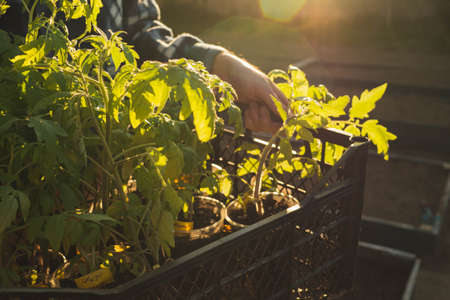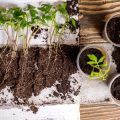1. Introduction to Grow Lights
If you love growing plants indoors, you’ve probably heard about grow lights. These special lights are designed to help plants thrive when natural sunlight isn’t available—something that’s especially important for many plant lovers across the United States. Whether you’re living in a city apartment with limited window space or just want to grow herbs year-round, understanding how grow lights work can make a big difference in your indoor gardening success.
What Are Grow Lights?
Grow lights are artificial light sources, usually electric lamps, created to mimic the sun’s natural light spectrum. They provide the energy that plants need for photosynthesis, which is the process plants use to turn light into food. Without enough good-quality light, most indoor plants won’t grow well and may even die.
The Role of Grow Lights in Indoor Gardening
In the U.S., indoor gardening has become more popular than ever. Many people use grow lights to:
- Start vegetable seeds before spring planting
- Grow fresh herbs and greens year-round
- Keep houseplants healthy during darker winter months
- Cultivate exotic plants that need specific light conditions
Because not all homes get enough sunlight—especially during the shorter days of winter—grow lights fill the gap and keep your indoor garden green and growing.
Why Grow Lights Are Essential for U.S. Plant Enthusiasts
The United States spans a wide range of climates, from sunny Florida to chilly Minnesota. Here’s a quick look at why grow lights are so important for different regions:
| Region | Daylight Hours (Winter) | Common Challenges | How Grow Lights Help |
|---|---|---|---|
| Northern States (e.g., New York, Michigan) | 8-9 hours | Short winter days, low sunlight | Supplements light for houseplants and seed starting |
| Southern States (e.g., Texas, Florida) | 10-11 hours | Indoor spaces may lack direct sun due to heat or window placement | Ensures consistent growth indoors year-round |
| Urban Areas (e.g., Chicago, Los Angeles) | Varies with building shade | Limited window space, shaded apartments | Makes it possible to garden indoors regardless of apartment size or orientation |
The Bottom Line: More Than Just Light Bulbs
Grow lights aren’t just regular bulbs—they’re specially made to give your plants exactly what they need. By using them, American plant enthusiasts can enjoy lush greenery indoors no matter where they live or what season it is.
2. Understanding Photosynthesis and Light Spectrum
Plants have a special way of making their own food called photosynthesis. This process happens when plants use light energy to turn carbon dioxide and water into sugars, which give them energy to grow. But not just any light will do—plants need specific colors, or wavelengths, of light to perform photosynthesis most efficiently.
How Plants Use Light for Photosynthesis
The green pigment in plant leaves, called chlorophyll, captures energy from light. When sunlight (or artificial light) hits a leaf, chlorophyll absorbs the light and starts a chain reaction that produces food for the plant. This is why giving your indoor plants the right kind of light is so important.
The Light Spectrum: Which Colors Matter Most?
Light is made up of different wavelengths that appear as colors to our eyes. Each color has a different effect on plant growth. Here’s how it breaks down:
| Light Color (Wavelength) | Role in Plant Growth |
|---|---|
| Blue Light (400-500 nm) | Promotes strong roots and leafy growth; essential for young seedlings and vegetative stages. |
| Red Light (600-700 nm) | Encourages flowering and fruit production; critical during the blooming stage. |
| Green Light (500-600 nm) | Mostly reflected by plants, but helps with overall health and can penetrate deeper into the canopy. |
| Far-Red Light (700-800 nm) | Influences flowering timing and stretching; used in combination with red and blue for optimal results. |
Why Artificial Grow Lights Matter Indoors
Since indoor spaces often lack enough natural sunlight, grow lights are designed to provide these key wavelengths so your plants can photosynthesize properly. Most grow lights focus on blue and red wavelengths because these are the most beneficial for healthy plant growth from seedling to harvest.
![]()
3. Types of Grow Lights and Their Applications
Choosing the right grow light can make a big difference for indoor gardeners in the U.S. With so many options, it helps to understand how each type works and which plants they suit best. Here’s a breakdown of the most common types of grow lights: LED, fluorescent, and incandescent.
LED Grow Lights
LEDs (Light Emitting Diodes) are the most popular choice today for American home gardeners. They use very little electricity, produce less heat, and last a long time—often up to 50,000 hours or more! LEDs come in many shapes and sizes, including panels and bulbs that fit regular lamps.
Main Benefits:
- Energy efficient (low electric bills)
- Low heat output (less chance of burning plants)
- Customizable spectrum (can provide red, blue, or full-spectrum light)
- Long lifespan
Best Uses:
- Seed starting
- Leafy greens (like lettuce and herbs)
- Flowering houseplants
- Fruit-bearing plants (with full-spectrum models)
Fluorescent Grow Lights
Fluorescent lights, such as T5 tubes or compact fluorescent bulbs (CFLs), have been a go-to option for decades. They’re affordable and easy to find at hardware stores across the U.S.
Main Benefits:
- Budget-friendly
- Cool operation—won’t overheat small spaces
- Good light spread for shelves or racks
Best Uses:
- Starting seeds indoors
- Growing microgreens or leafy vegetables
- Herb gardens on kitchen counters
Incandescent Grow Lights
Incandescent bulbs are the old-fashioned type you might still find in some homes. While inexpensive upfront, they aren’t ideal for most plant needs today.
Main Benefits:
- Very cheap to purchase initially
- Easily available in local stores
Main Drawbacks:
- Inefficient—use a lot of electricity for little usable light
- Create a lot of heat (risk of burning leaves)
- Poor spectrum for plant growth (mainly yellow/red light)
Best Uses:
- Tropical houseplants that like warmth (but keep lights far enough away)
- Seldom used for serious gardening purposes today
Grow Light Comparison Table
| Type | Lifespan (Hours) | Energy Efficiency | Spectrum Options | Main Use Cases |
|---|---|---|---|---|
| LED | Up to 50,000+ | Excellent | Customizable/full-spectrum available | All-purpose: seed starting, greens, flowers, fruiting plants |
| Fluorescent (T5/CFL) | 7,000–20,000 | Good | Mainly blue/white; some full-spectrum | Seeds, leafy greens, herbs |
| Incandescent | Around 1,000 | Poor | Mainly yellow/red; not ideal for growth | Tropical houseplants (rarely used now) |
No matter which type you choose, be sure to match your grow light to your plant’s needs and growing space. The right artificial light can help your indoor garden thrive—even if you don’t get much natural sunlight at home!
4. How Artificial Light Mimics Natural Sunlight
When growing plants indoors, one of the biggest challenges is replacing natural sunlight. Plants rely on sunlight for photosynthesis, but indoors, windows or regular home lighting rarely provide enough energy. That’s where grow lights step in. These special lights are carefully engineered to mimic the sun’s spectrum and intensity, helping your indoor plants thrive just like they would outside.
Understanding Light Spectrum and Intensity
The sun emits a full spectrum of light, including all the colors visible to our eyes plus some we can’t see, like ultraviolet (UV) and infrared (IR). Plants use mainly blue and red light for photosynthesis. Blue light supports leafy growth, while red light helps with flowering and fruiting.
How Grow Lights Match Sunlight
| Type of Light | Main Features | How It Benefits Plants |
|---|---|---|
| LED Grow Lights | Customizable spectrum; low heat; energy-efficient | Mimics blue and red wavelengths for balanced growth and flowering |
| Fluorescent Lights | Good for seedlings; cooler temperature; lower intensity | Provides enough blue light for early plant stages |
| High-Intensity Discharge (HID) | Very bright; covers large areas; generates heat | Strong light for mature plants needing lots of energy |
Spectrum Tuning: Getting the “Sun” Just Right
Modern grow lights, especially LEDs, can be fine-tuned to emit the exact mix of colors that plants crave at different stages of their life cycle. For example, you might use more blue during seedling growth and add more red as your plant starts to flower or fruit. Some advanced systems even allow you to adjust the spectrum with a remote or smartphone app.
Light Intensity: Giving Plants Enough “Daytime” Indoors
Apart from color, grow lights are designed to deliver the right amount of brightness—measured in lumens or PAR (Photosynthetically Active Radiation). This ensures that indoor plants get enough “daytime hours” to power their photosynthesis process. Adjustable fixtures let you position lights closer or further from your plants to control how much energy they receive, just like moving a plant closer to a sunny window.
Why Engineering Matters for Healthy Plants
The science behind grow lights goes far beyond simply turning on a lamp. By carefully engineering both spectrum and intensity, manufacturers create artificial lighting solutions that truly support healthy indoor plant growth—from leafy greens on your kitchen counter to blooming flowers in your living room. With the right grow light setup, anyone can enjoy a little bit of sunshine indoors all year long!
5. Setting Up Grow Lights for Indoor Gardening
Understanding Your Space and Plant Needs
Whether you’re gardening in a cozy apartment, a sunroom, or a large greenhouse, setting up your grow lights correctly is key to helping plants thrive indoors. Before you start, consider the types of plants you have and their light requirements. Some plants need lots of bright light, while others do well with lower levels. Knowing this helps you choose the right grow lights and placement.
Choosing the Right Grow Light
| Type of Grow Light | Best For | Pros | Cons |
|---|---|---|---|
| LED | All indoor spaces; energy efficient | Long lifespan, low heat output, customizable spectrum | Higher upfront cost |
| Fluorescent (T5/T8) | Seedlings, herbs, leafy greens | Affordable, cool temperature | Less intense light, shorter lifespan than LED |
| High-Intensity Discharge (HID) | Larger greenhouses, fruiting plants | Very bright light, great for big plants | Produces heat, uses more energy |
Placement and Height Guidelines
The distance between your grow lights and plant tops matters. Too close, and you risk burning leaves; too far, and plants may stretch or get leggy. Here’s a general guide:
| Grow Light Type | Recommended Distance from Plants |
|---|---|
| LED (High Output) | 12-24 inches above plant canopy |
| Fluorescent (T5/T8) | 6-12 inches above plant canopy |
| HID (MH/HPS) | 24-36 inches above plant canopy |
If you see yellowing or scorched leaves, move the lights higher. If plants lean or stretch toward the light, lower them or add more fixtures.
Lighting Schedules: Mimicking Nature Indoors
Your plants need periods of darkness as well as light. Most edible and flowering plants do best with 12-16 hours of light per day. Use a timer to make things easy—set it and forget it!
Troubleshooting Common Issues in American Homes and Greenhouses
- Lack of Outlets: Use power strips with surge protection for multiple lights.
- Limited Space: Try vertical shelving with adjustable grow lights for apartments.
- Heat Buildup: Make sure there’s good air circulation, especially with HID lights.
- Pests or Mold: Don’t overcrowd plants; space them out for airflow under the lights.
Caring for Your Indoor Lighting Setup Over Time
Dust off bulbs and fixtures every couple weeks to keep light strong. Replace bulbs as recommended by the manufacturer—LEDs last years, but fluorescent tubes dim over time. Periodically rotate your plants so all sides get even exposure.
6. Common Challenges and Solutions
Understanding Typical Grow Light Problems
Indoor gardeners often run into some common hurdles when using grow lights to support plant photosynthesis. Knowing what these issues are and how to tackle them can make a big difference in your indoor garden’s success.
Common Obstacles with Grow Lights
| Challenge | Description | Solution |
|---|---|---|
| Light Burn | Leaves get scorched or faded from too much light or lights placed too close. | Raise the lights higher above plants; use timers to reduce exposure time. |
| Insufficient Light | Plants become leggy or pale due to not enough light intensity or duration. | Add more lights, choose higher-wattage bulbs, or extend daily light hours. |
| Poor Light Spectrum | Plants show weak growth because the spectrum doesn’t match their needs. | Select full-spectrum LED grow lights that mimic natural sunlight for all stages. |
| Heat Build-Up | The area gets too hot from certain types of bulbs (like HID or incandescent). | Switch to cooler LEDs, increase ventilation, or use fans near your setup. |
| Uneven Coverage | Certain parts of your garden get more light than others, leading to uneven growth. | Reposition lights regularly; rotate plants; consider reflective surfaces around your grow space. |
| High Energy Bills | Electricity costs rise from running powerful lights for long periods. | Use energy-efficient LEDs and install timers to control on/off cycles automatically. |
Troubleshooting Tips for Indoor Gardeners
- Monitor Your Plants: Check leaves regularly for signs of stress like curling, yellowing, or brown spots. Adjust light placement if needed.
- Measure Light Levels: Use a light meter or smartphone app to make sure your plants get enough brightness (measured in foot-candles or lux).
- Set Up a Routine: Most indoor plants thrive with 12-16 hours of light per day. Automatic timers help keep things consistent without guesswork.
- Avoid Overwatering: Grow lights can dry out soil faster. Check moisture levels before watering to prevent root rot.
- Keep Equipment Clean: Dust and dirt on bulbs or reflectors can block valuable light. Wipe down equipment every couple weeks for best results.
7. Conclusion: Embracing Technology for Greener Homes
The Bright Future of Indoor Gardening
Using grow lights is changing the way Americans care for their indoor plants. Thanks to advancements in lighting technology, its easier than ever to keep houseplants healthy and thriving—even in homes without much natural sunlight. Grow lights mimic the sun’s rays, providing the right wavelengths that plants need for photosynthesis. This means you can grow vegetables, herbs, flowers, or decorative plants indoors all year round.
Why Choose Artificial Lighting?
| Advantage | How It Helps You |
|---|---|
| Year-Round Growth | No need to wait for sunny weather—grow fresh produce and beautiful plants anytime. |
| Energy Efficiency | Modern LED grow lights use less electricity and last longer, saving money over time. |
| Customizable Light Spectrum | You can match the light spectrum to your plant’s needs, from seedlings to flowering stages. |
| Sustainable Living | Growing your own food indoors reduces reliance on store-bought produce and lowers your carbon footprint. |
| Flexibility in Home Design | Create green spaces anywhere—apartments, basements, or rooms with little sunlight. |
Making Indoor Gardening Easy for Everyone
You don’t need a green thumb or a big backyard to enjoy gardening. With artificial lighting, anyone can start an indoor garden—whether it’s a kitchen herb box or a lush living room display. Grow lights are affordable, easy to set up, and widely available at local home improvement stores across the U.S.
Take the First Step Toward Sustainability
By using grow lights, you’re not only helping your plants but also supporting a more eco-friendly lifestyle. Imagine picking fresh basil for dinner straight from your windowsill or enjoying colorful blooms even in the middle of winter! Indoor gardening with artificial light is a simple way to bring more greenery into your home and contribute to a healthier planet. Start small, experiment with different plants, and discover how technology can help you create a greener home—right here in America.


